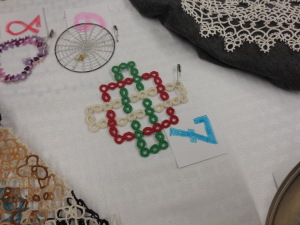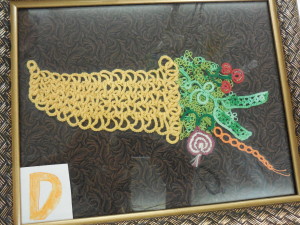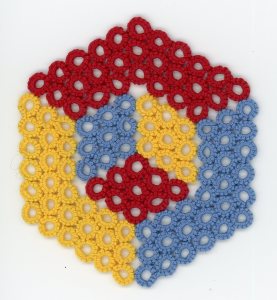Allow me to introduce to you MY approach to interpreting Quilting in Tatting:
I have several approaches to incoporating quilt-inspired designs into tatting, specifically Split Ring Tatting. This morning I did a quick count of the pieces that I have done and I have 4 distinct styles of Quilt-Inspired Tatting Designs.
The design-type that I am finishing up at the end of this year is what I call my “Patchwork Series”.
A Patchwork Quilt is created by sewing together smaller ‘pieces’ of fabric into a larger ‘block’ of fabric to create a basic design unit. Historically the different ‘blocks’ had names that date back to pioneer days.
To recreate quilt blocks in my Tatted Patchwork Series, I use ‘square-rings’ (a term coined by another designer to designate rings created with 4 DS, picot, 4 DS, picot, 4 DS, picot, 4 DS) created using Split Ring Tatting technique to ‘stack’ them one upon another, in right angles to one another, to form a ‘piece’. Then the ‘pieces’ (in different colors) are joined together to form ‘blocks’. I have been studying historical quilt blocks (the fabric kind) to discern the pattern of the block and then creating my own ‘pieces’ and ‘blocks’.

The two tatted blocks above are the two that I have done (tatted)–not finished nor blocked! Yikes—I really need to work on my photography skills!
Don’t be too daunted by the all the ends that will need to be finished (at least 2 per ‘block’)—they can be brought to the back of a piece of fabric and tied off, concealing the ends. More about that later!!!








